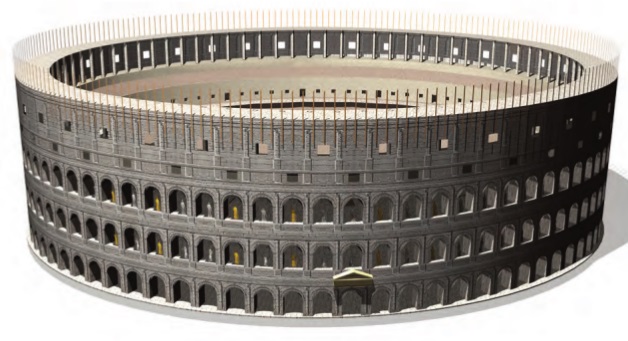

Social Sciences and Humanities > Home > Journal

NUMEAR - ISSN 2515-7574 - © ISTE Ltd
The Numerical Archeology journal focuses on the practices of and reflections on the use of digital technologies in archaeology, in the study of European history or in heritage conservation sciences.
The articles, which are mostly methodological, may cover the following topics:
- 2D and 3D data acquisition techniques (drone, scanner, LiDAR, thermography, photogrammetry, databases, mobile computing, etc.);
- structuring of archaeological/historical and heritage data (SBDR, SIG, XML, semantic web, etc.);
- modeling and digital analysis of data (spatial analysis, agent models, 2D/3D analysis, statistical analysis, etc.);
- tools for the propagation and dissemination of results on the web and new research practices (collaborative platforms, open data and open source application development).
La revue Archéologies numériques s’intéresse aux pratiques et aux réflexions sur l’usage du numérique en archéologie, dans les sciences historiques européennes ou de la sauvegarde des patrimoines.
Les articles, essentiellement méthodologiques, peuvent couvrir notamment les sujets suivant :
- techniques d’acquisitions de données 2D et 3D (drone, scanner, LIDAR, thermographie, photogrammétrie, bases de données, informatique mobile…) ;
- structuration des données archéo-historiques et patrimoniales (SBDR, SIG, XML, Web sémantique…) ;
- modélisations et analyses numériques des données (analyse spatiale, modèles agents, Analyse 2D/3D, analyses statistiques…) ;
- outils de diffusion et de dissémination des résultats sur le Web et nouvelles pratiques de la recherche (plateforme collaboratives, open data et développements applicatifs open-source).
The recent democratisation of UAVs and the progress made in sensor miniaturisation now make it
possible to embark miniaturised LiDaRs on board mini-UAVs. This possibility opens the way to a more systematic use of Lidar technology for the survey of small forested areas and for the mapping of isolated archaeological sites. The paper presents a feedback from the Garonne valley where the acquisition of Lidar data by drone on three archaeological forested sites allows to discuss the variations in the extent and use of the current forested area. The quality of UAV-Lidar data is also compared to data acquired by plane.
The technological analysis is one of domains for which the 3D technologies have to bring again a lot. The analysis of stigmas or surface markings left by the operations of shaping and surface processing on ceramic was chosen as case study, because it is still often led thanks to visual or radiographic observations in 2D. It is a compared approach which is proposed here, by the implementation on the same corpuses of protocols of acquisition and 3D modelling by lasergrammetry, photogrammetry or the RTI (Reflectance Transformation Imaging). The results reveal methods that are more relevant to macrotrace analysis than others.
Delos is with Delphes, one of the most prestigious Greek sanctuaries in the Mediterranean. Used from the eighth century BC until the end of Roman antiquity, it will remain the most important maritime sanctuary in the Mediterranean in antiquity. We present here the work done on the digital model of the sanctuary set up as part of the publication of the Sanctuary. In addition to the synthesis that it has enabled us to achieve, the 3D restitution process has been an opportunity to question our visions of this major heritage and to propose new angles of view and understanding of this sanctuary. The approach illustrates quite explicitly the value of developing an integrated digital approach from collection to restitution and demonstrates the heuristic value of digital restitution. This work leads to a reflection linked to the objectivity of the restitution of these ancient spaces. Here in Delos, for example, the restitution of the columns or bases bearing the statues transforms the vision we might have of the area around the altar of Apollo. They make it possible to perceive the obstruction of the sanctuary around 150 BC which could not be known before making the restitution.
Editorial Board
Editor in Chief
Laurent COSTA
Archéologies et Sciences
de l’Antiquité, Nanterre
laurent.costa@mae.cnrs.fr
Co-Editors
François DJINDJIAN
Chercheur associé, UMR 7041 ArScAn
francois.djindjian@wanadoo.fr
François GILIGNY
Université de Paris 1
Panthéon-Sorbonne
francois.giligny@univ-paris1.fr
Éric MERMET
École des hautes études
en sciences sociales, Paris
Institut des systèmes complexes
eric.mermet@ehess.fr
Fréderic POUGET
Université de La Rochelle
frederic.pouget@univ-lr.fr
Anne-Violaine SZABADOS
Archéologies et Sciences
de l’Antiquité, Nanterre
anne-violaine.szabados@
mae.u-paris10.fr